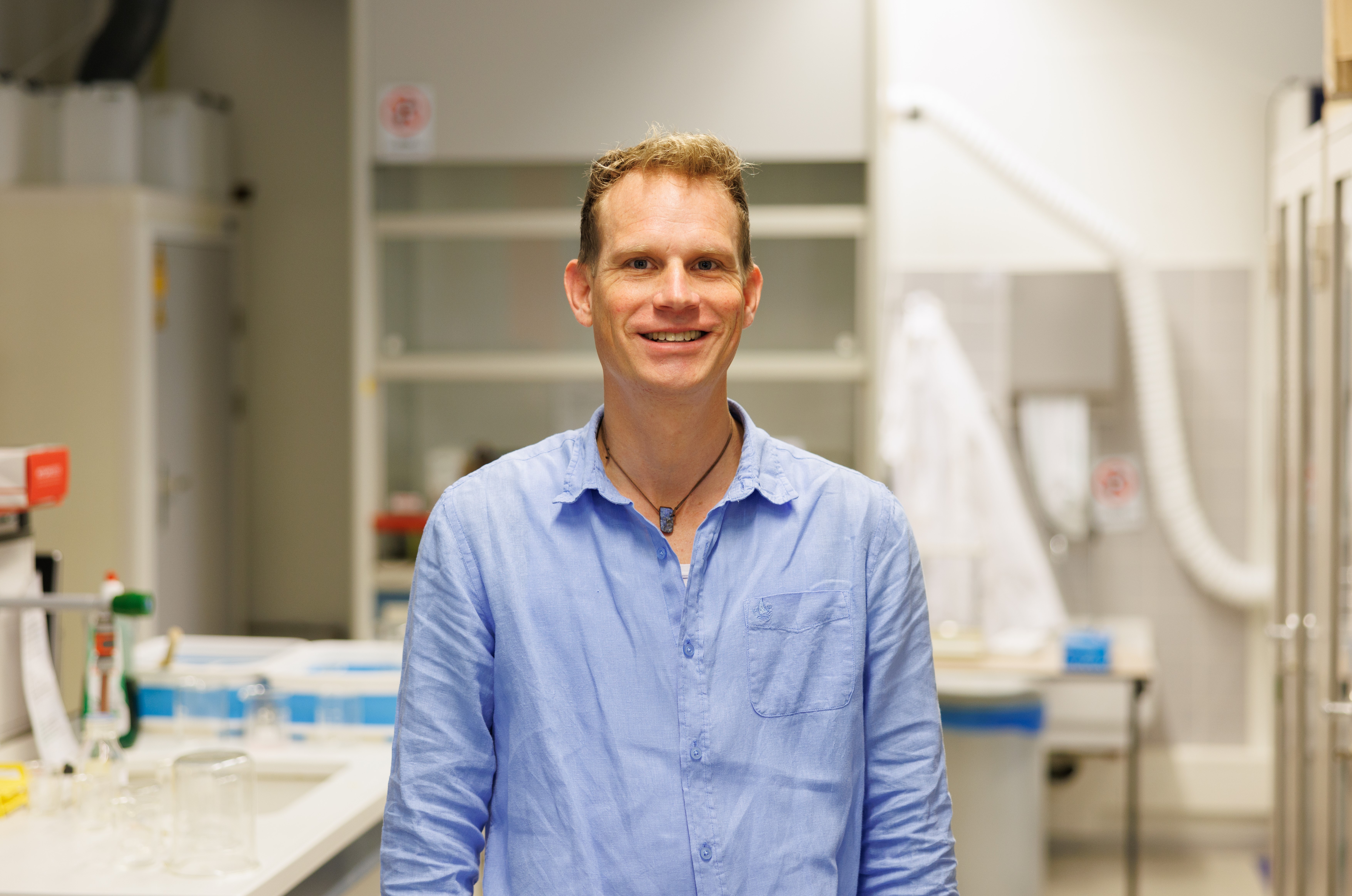Lecturer in Applied Physics Martijn Hunter about the new Strategic Plan
12 April 2023
Students are no longer surprised. Neither are my colleagues. Lecturer, first-year coordinator and mentor Martijn Hunter teaches his Applied Physics class barefoot and in shorts.

“For me, the plan is the shining house on the hill”
Students are no longer surprised. Neither are my colleagues. Lecturer, first-year coordinator and mentor Martijn Hunter teaches his Applied Physics class barefoot and in shorts. Even when it's freezing outside. "It makes me feel good. I like to connect with the other person. Well, you can't be in a hurry barefoot, you live in the here and now." Martijn is an enthusiastic ambassador of the new Strategic Plan. Inclusion and equal opportunities are main themes for him.
Within the Applied Physics degree programme in Delft, Martijn wants to be the motivator and bridge builder towards a truly inclusive school with equal opportunities for everyone. "If everyone can be who they are, we will be good. Then we will be an inclusive university of applied sciences." It seems so simple. But it takes time, conviction and training. He is pleased that the Strategic Plan conveys the same message.
Happy with young adults
After his studies at the – then – Technical University of Applied Sciences in Rijswijk (it later merged with The Hague University of Applied Sciences) and at TU Delft, Martijn worked for a number of years in the business world as an R&D engineer. "As a physicist, I thought of all kinds of technically complex products that my employer could put on the market." It wasn't his dream job. "I increasingly missed the connection with young people. So if you ask me where I'd rather be, in front of the classroom or in an R&D lab, you know what my answer is: in front of a class. It makes me happy to work with young adults here. I am strongly developing towards study career guidance and attention officer. These care tasks for our Applied Physics students really appeal to me."
Curriculum as co-creation
Martijn believes that things can always be improved and that the human dimension should be leading in this. "What does a student need to be successful? How could I contribute to that? How can the curriculum we are currently developing help with this?" As a first-year coordinator, Martijn is one of the initiators of this new curriculum, which is first being implemented for the foundation programme. "Building such a curriculum is a task for lecturers, students and the professional field. A real co-creation."
Customisation as the norm
There is great diversity in Applied Physics. "Not in terms of ethnicity, but in terms of neuro-diversity. Everyone's brain works differently. We have a relatively large number of students with dyslexia, ADHD or a disorder from the autism spectrum. We also have a relatively large number of students who are super smart and who are looking for a much greater challenge. How wonderful it would be if we took this into account when we design our education! Even if you think in a different way or have a different learning need, you can still keep up with the education we offer. That means our education has to become so flexible in its content and testing that customisation becomes the norm."
The content and testing format for our education has to become so flexible that customisation becomes the norm.
Strategic plan is great help
If customisation becomes the norm, lecturers will pay close attention to their students. This means everyone gets equal opportunities. Martijn: "I started out at a junior technical school. Followed by an intermediate technical school, then a higher technical school and finally university. My personal student journey was only possible because the teachers saw my potential. Because they supported me in that. I would like to be that kind of person myself. My dream job is to be the attention officer for Applied Physics who makes inclusive education possible. The new Strategic Plan will greatly help to make that a reality."
Building bridges
He acknowledges that the wording in the Strategic Plan can be very big picture for lecturers. "In that sense, it's far removed from the workplace. But for me, the plan is the shining house on the hill. If I can use my enthusiasm to translate the Strategic Plan into something that really offers added value for Applied Physics, then my colleagues can connect to that translation. It's my challenge and a very interesting part of my work to build these bridges. In the hope that this will provide intrinsic motivation for the new curriculum."
Organisation required
What does that mean in practical terms within Applied Physics? Martijn: "Flexibility in learning tracks and testing formats. Offering more blended teaching formats. Responding to neuro-diversity. A greater focus on coaching and guidance. Of course, we can't do it all alone. "When it comes to more flexible learning tracks, we can look at how two-year pro degree programmes do this. When it comes to flexible testing formats, we need the support services that will facilitate the organisation of a different testing format. When it comes to neuro-diversity, we need to pull the knowledge about this from somewhere else in our organisation. We can do a lot by co-creating."
None of this happens overnight. "It will take training, perseverance and patience. As long as we have that intrinsic motivation. It also took me six months of training before I had the courage to jog barefoot through the forest. But now it feels wonderful and free."
In Stories of The Hague, we share portraits of colleagues and students, in which they talk about the connection between their own motivations and the Strategic Plan.